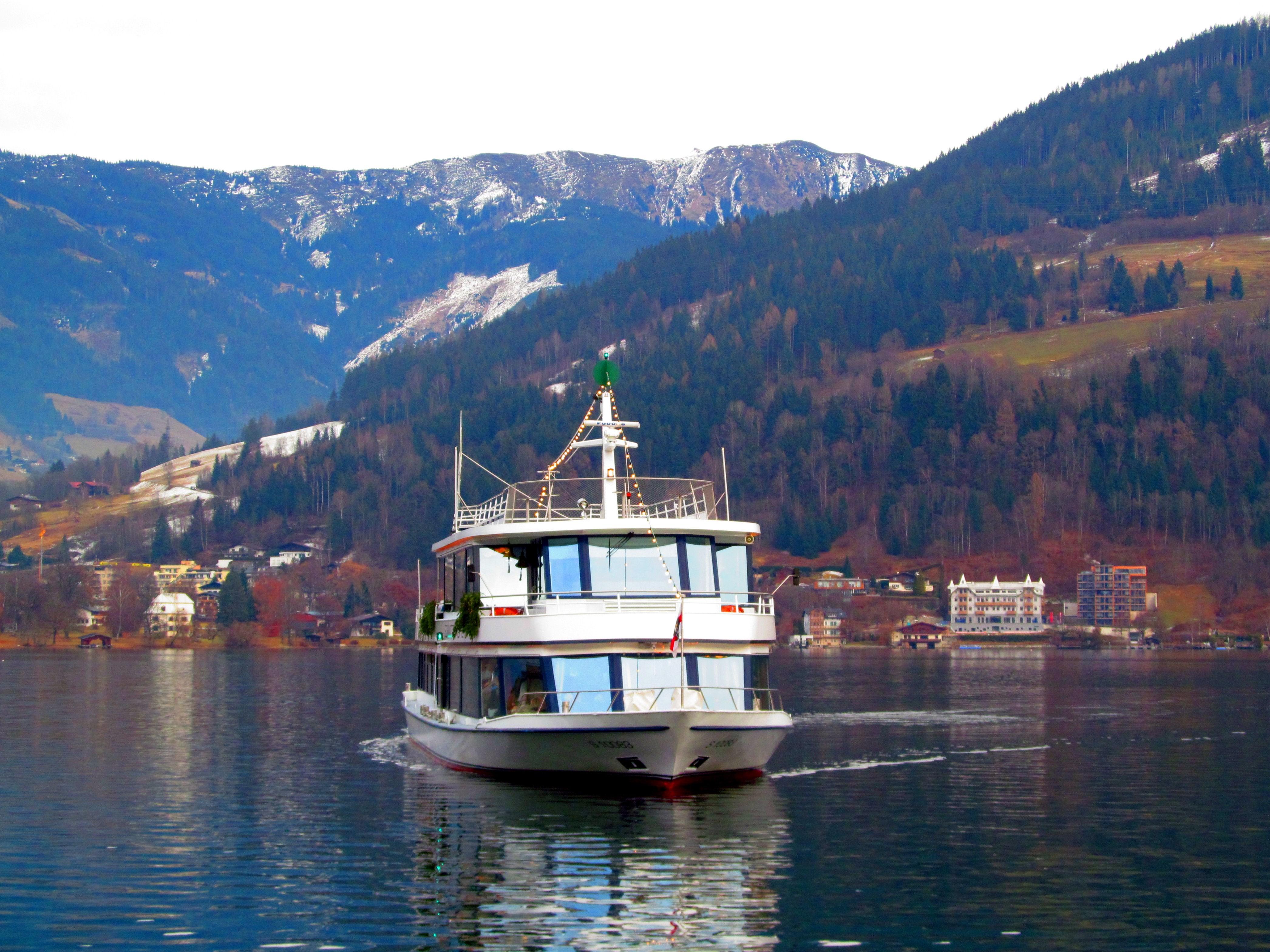











































p.5
FILM REVIEW LYON LA VILLE DES LUMIÈRES L’ÀFRICA LA LLAR SECRETA DEL MODERNISME CATALÀ KENTUCKY MY YEAR ABROAD CAPODANNO ITALIANO ABITUDINI E TRADIZIONI
p.10 p.13 p.4
p.11 LABELLE ETLABÊTE
Issue 20
FEATURED ARTICLE
DARE TO TRY
Yana Petkova writes about weird and wonderful food traditions across the world
PAGE 8
THE LINGUIST TEAM 2016/17
CHAIR: KIA MARIE HUNT
SECRETARY: KATYA BROWNE
TREASURER: HENRY WAKELAM
CREATIVE DESIGNER: MARY MCGOWAN
SOCIAL SECRETARY: NATALIE ELLIOT

PUBLICITY OFFICER & DESIGN
ASSISTANT: ZOE LUMSDEN
PROOF READER: SARAH DANIELS
PROOF READER & GERMAN: RACHEL MORRIS
CURRENT AFFAIRS & PORTUGUESE: CONNOR HAINES
CULTURE: JENNY NICHOLLS
LIFE & STYLE: BEN HILTON
FOOD & DRINK: YANA PETKOVA
TRAVEL: STEFFI BALLMANN

FRENCH: LUCY HARKINS
RUSSIAN: ALEX CAVES
CHINESE: NINA MA
ITALIAN & CATALAN: OLIVER EDWARDS
POLISH & UKRANIAN: CHARLOTTE SIMPSON
BULGARIAN: BORIS GENOV
SPANISH: EMILY DARBY
Want to see your photo on the cover? Send us an email at linguist@guild.bham.ac.uk
EDITOR’S NOTE
























Welcome to Issue 20 of the UoB Linguist Magazine; our first issue of 2017!
If this is the first time you’ve been lucky enough to discover a copy of our publication, let me giveyouaquickoverview…
We are the University of Birmingham’s only multilingual publication. Anyone that has an interest in foreign languages, global travel, or international cultureiswelcome.
Since we are run by students, for students, learners of any language ability can get involved. Allpublishedarticlesarechecked by a native proof-reader and receive feedback, which makes it a great way to improve. So, if you’re interested in finding out more, you’re welcome to get in touch!
Those of you that are regular readers will be happy to find that our twentieth issue yet again lives up to the level of diverse and creative content that is usuallyexpected.
by Kia Marie Hunt
Somehow, in the middle of essay deadline season, our team still managed to conjure up so many excellent articles!
Ifkeepingupwithworldnews is your thing, check out Connor’s recap of 2016’s political events in our Current Affairs section.Forsomethingalittle more escapist perhaps, you could browse some book and film reviews in the Culture section. Or, if you are interested in fashion, take a look at the Life & Style section for Cate’s guide to vintage shoppinginParis.
Our foreign language sections are bursting at the seams as usual. Just flicking through this magazine always makes me want to start learning yet another language! I wish I understood German so I could read about the Words of the Year, or French so I could explore Lyon or Strasbourg. If you’re able to read Polish, check out Franciszka’s article about Christmas in Poland. And if you don’t know Russian but you’re still interested in St. Petersburg, it’s your lucky day; this issue’s article is in English.
Asusual, veryhappyreading!
February 2017
COVER PHOTO: Kia Marie Hunt Lake Zell, Austria
ABOVE PHOTO: Zoë Lumsden Verona, Italy
你好 ! Hallo! Tudobem?
PAGE 3: CURRENT AFFAIRS
PAGE 4: TRAVEL
PAGE 5-6: CULTURE
PAGE 7: LIFE AND STYLE
PAGE 8: FOOD AND DRINK
PAGE 9: DEUTSCH
PAGE 10: FRANÇAIS
PAGE 11: ESPAÑOL and CATALÀ
PAGE 12: PORTUGUÊS
PAGE 13: ITALIANO
PAGE 14: POLSKIE and БЪЛГАРСКИ
PAGE 15: РУССКИЙ
CONTACT US

If you would like to know more about our magazine, our writers or have comments to make about our articles then feel free to check out our Facebook and Twitter pages or email us. If you wish to read more articles check out our website. We’re always looking for new writers and contributors, so don’t hesitate to get in touch!
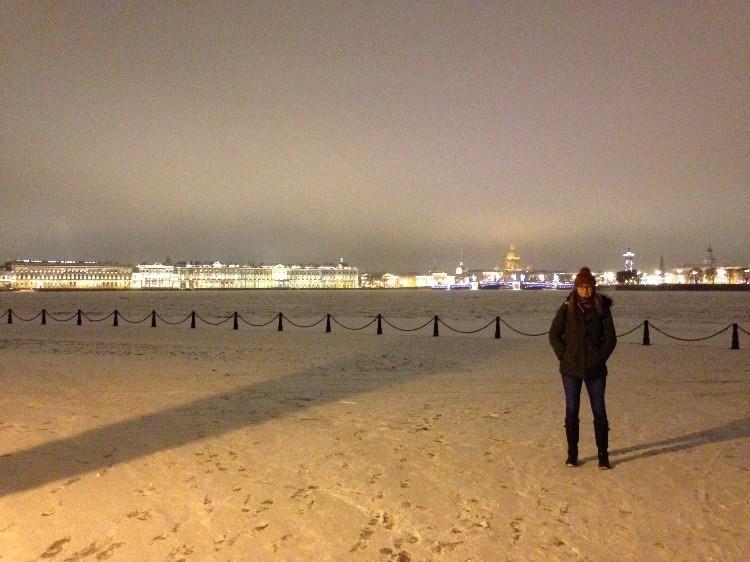

UoBLinguist_Mag








linguist@guild.bham.ac.uk




UoB Linguist Magazine
THEUOBLINGUIST.CO.UK UoBLinguist_Mag The
IN THIS ISSUE
RECAPPING 2016, PREVIEWING 2017
More political upsets on the cards?
Happy New Year, everyone! As 2017 is still fairly fresh, I thought it would be a good time to sit back and take stock of some of last year’s political earthquakes, before looking forward to the delights that await us this year.
Brexit
One that comes up frequently to say the least, but too significant to be left out. David Cameron was so confident that he could win a referendum on the EU that he staked his political career on it – what a terrible miscalculation that turned out to be. The UK has for many months been split straight down the middle on the issue of Europe and, on that day, the Eurosceptics edged it, stunning politicians, pollsters, and observers across the world. Cameron fell on his sword, and a monumental exit process – with many implications yet to be known – now ensues. What could possibly go wrong?
Brazilian impeachment


Dilma Rousseff probably thought she would be in for a good year as Brazil was gearing up to host the Olympic Games. But before she even had a chance to prepare her speech for the opening ceremony, she found herself preparing speeches to defend herself against the major political scandal she found herself caught up, involving state-owned oil company Petrobras. In the end, the Senate wielded the axe, and a new president – from the opposition party – was in place, just in time for the opening of the Games. The investigation was far from clear cut, with her supporters equally vocal and numerous as her opponents. Brazil’s economy is in big trouble, and new President Michel Temer must try to hold the government togetherthrough the chaos.
By Connor Haines
Trump becomes POTUS
The establishment had already been rocked by Brexit –surely it wouldn’t happen again across the water? It’s a similar story – pollsters gave him no chance, almost every federal politician either supported Hillary Clinton, with years of political experience behind her, or refused to back Trump, a man with no political experience whatsoever. Hillary probably couldn’t believe her luck – until the day of the election, that is. As it turns out, she won just under 3 million more votes than Trump. But under the historic Electoral College system, Trump claimed enough states to snatch the victory. Prone to unsavoury outbursts and wild comments, and with remarkably few policies – yet he connected with far more Americans than could ever have been anticipated.

What’s next?
After the political upheaval and toppling of the establishment of 2016, could this really extend in 2017? The short answer – possibly. In France, Conservative candidate François Fillon is up against far-right, anti-EU, antiestablishment candidate Marine Le Pen, who has been gaining huge momentum, partly on the back of events in the UK and the US. Perhaps this has been making her and her supporters believe that they have a real chance in pulling off a similar shock in France. Meanwhile, in Germany, Angela Merkel is running for a fourth term in office, but has been severely hampered by her policy of welcoming refugees with open arms, and attitudes are hardening, following a number of terrorist attacks around the country. It is once again the anti-establishment, far-right troops on the march, led by Frauke Petry, whose hard-line views are resonating with sections of the German public, as shown by their success in last year’s local elections. They too will be looking to raise a few eyebrows at the ballot boxes, and with other anti-EU groups on the rise across Europe, the future of the European Union could well hang in the balance. Sit back and enjoy…

THEUOBLINGUIST.CO.UK 3
LIVING IN KENTUCKY By







 Steffi Ballmann
Steffi Ballmann
One massive reason I chose to study History and American Studies was because this degree involved a year at a university in either the US or Canada. For me, this was always going to be the US. I had all the American stereotypes set up in my mind before I left: the irritating accents, over
There are around 3,000 students at the university. I arrived with about 20 other international students, and I was the only English girl. The fascination Americans had in my accent never died down during my year there. My time there was fantastic. Kentucky is in a great location, and made travelling to other cities very easy, considering the size of America. Friends and I drove up to Chicago, down to Florida for Spring Break, to Nashville and Memphis and other
Life at the university was definitely different. We really had to keep it quiet when we wanted to drink– no alcohol was allowed in campus as, of course, the drinking age is 21. On one occasion, I turned up to a university event extremely inebriated and had to pay a $100 fine and complete a drink awareness course! I spent the year in a shared room– this was a strange experience as privacy was limited, but it defi-
Living in Louisville and studying at Bellarmine is something I’ll never forget. It was the most special year of my life in so many ways. My year abroad not only gave me lifelong friends, but is also allowed me to see lesser known places in the US, which deserve just as much awe as more famous

GUILD OF STUDENTS ‘OUTSTANDING OUTREACH 2015’! 4
FILM REVIEW:LABELLEETLABÊTE


Mention “Beauty and the Beast” to anyone and, as likely as not, he or she will conjure up images of Disney’s 1991 musical animation. Controversially, perhaps, I feel that that film pales in comparison to Jean Cocteau’s French live-action film of half a century before, La belle et la bête.
For the few who are unfamiliar with the fairytale (originally published in 1757 by Jeanne-Marie Leprince de Beaumont), the story tells of a beautiful young girl called “Belle” who is drawn to “Beast”, an elusive and seemingly repellent monster. The tale encompasses themes of tragedy, love, beauty, and death.
By Matthew Bruce
While it is easy for us modern filmgoers, attuned to computerised special effects and 3D-technology, to scoff at the rather primitive workings of Cocteau’s film, they are, nevertheless, beautiful. Paradoxically, there is a richness and clarity to black-and-white film that is not always replicated in colour. Beast’s outfits are inspired, and there is something magical about the moving ornaments within Beast’s castle. Cue, for example, the stone hands grasping candles, which move and guide Belle, the visitor, through the darkness of the corridor.

...tragedy, love, beauty and death
The film has rightly gone down as a classic of French cinema, and it remains to be seen whether this film will artistically supersede the live-action Disney reimagining of Beauty and the Beast which is due to be released later this year. If you’re a purist, I imagine it’s a safe bet; it will take a lot to surpass Cocteau’s magnificent film.
BOOK REVIEW: THEDOGWHODAREDTODREAM
 Author: Sun-Mi Hwang
Author: Sun-Mi Hwang
Translated from the Korean by: Chi Young-Kim
Written by international bestselling author Sun-mi Hwang, The Dog Who Dared To Dream is the tale of a dog and her master.
Scraggly is one of five pups born to an ailing mother. She has a scruffy black coat, and is the only one left behind when her family are dognapped. She forms a special relationship with her owner, an elderly man she calls Grandpa Screecher. Scraggly has dreams, of the wind and what lies beyond the gates of her sun-drenched yard, of motherhood and of friendship.
Told from the point of view of a puppy as she grows into adulthood, The Dog who Dared to Dream offers a refreshing and intriguing perspective on life. Scraggly watches as Grandpa Screecher’s son comes to visit, bringing his children and leaving too soon. She hears arguments; she walks the streets waiting for Grandpa to return home on his bicycle. Colours are less important than the smells. It is a fascinating new perspective of the world.
At the core of the story is the notion of family. Scraggly is an outsider, yet she loves her brothers and sisters and tries to protect them. She loves Grandpa Screecher. She doesn’t
 By Bea Harvie
By Bea Harvie
much like the old cat next door, but happily trades insults over the fence. Despite her determination to be happy, and to cling on to her dreams, each winter darkness descends and Scraggly has to face the challenges put before her. This book is beautifully written with a parable-like quality. Don’t think it’s a children’s book just because the narrator is a dog. It is a novel about loss, hardship, hunger, heartbreak… and family. Throughout it all, Scraggly and Grandpa Screecher rely on each other for a sort of abstract comfort. The translation, and knowing that it was written embedded in another culture, adds another layer of mystery and nuances that enhance the tale. The novel is no longer than 180 odd pages: you can do that in one sitting! I would highly recommend
thisbook. Image copyright:
Abacus







5 THEUOBLINGUIST.CO.UK
AND THE WINNER IS... BOOK REVIEW:THETRUTHABOUTTHEHENRYQUEBERTAFFAIR
Author: Joël Dicker
Translated from the French by: Sam
Taylor
The Truth About the Harry Quebert Affair is a thrilling pageturner that centres around a labyrinthine murder investigation, but at its core the novel also raises a spectrum of questions about the process of creativity and the motivations for writing fiction.

The narrator is Marcus Goldman, an author struggling to write his second book after the huge success of his first. He goes to New Hampshire to visit his old friend Harry Quebert, who is arrested soon afterwards when the remains of a teenage girl are discovered buried in his garden, 33 years after her disappearance. When it is revealed that a manuscript of Quebert’s most famous novel was found with the body, it seems like an open-and-shut case, but Goldman believes that his friend is innocent. Abandoning all efforts to produce any work for his publisher, and risking financial ruin as well as his reputation, hedecidestofindoutthetruth.
The main narrative takes place in 2008, rooted by the backdrop of Obama’s presidential election campaign, and it is interspersed with recounts of past events. It is meticulously
By Jenny Nicholls
created: the multiple timelines are seamlessly linked by the flow of the investigation and the characters are so vivid that certain revelations throughout the book feel like personal betrayals. Every character is projecting some form of falsehood. Some of these lies are small –like the aspiring writer from New York who does nothing to dispel the assumption that he is famous and wealthy –others are life-changing in their significance. Suffice to say that, as is often the case in seemingly quaint little towns, dark secrets lie just beneath the surface. Don’t be put off by the length of this brilliant book – it may have over 600 pages, but believe me, every one of those is worth it.





BREAKING DOWN THE LANGUAGE BARRIER
Share your passions
We all know that learning a language is a very rewarding experience. It can help you gain a deep insight into another person’s culture, beer, literature, food, politics, wine, and social life. Yet, on a personal level, it can also be a rather unrewarding learning experience. Native speakers talk very fast, and often use expressions never found in academic textbooks. Language learners can therefore find themselves lost in conversations with native speakers, and even bashing their head against their laptops when listening to the radio.
This doesn’t sound inspirational, but it’s a confidence hurdle that must be addressed by so many
Image copyright: Cynthia Chang language learners, including
 By Tom Shacklock
By Tom Shacklock

myself last year. The key phrase to learn for any language is, ‘could you speak a tad bit slower, please?’ While this question seems very embarrassing to ask, and is not helpful for all real-life contexts, it makes the entire experience abroad more enjoyable.
Language is a tool of communication, aiming to produce one thing: an idea. Unfortunately, we language students get too caught up on the idea of making friends and socialising to use a language for the sake of language. However, you can really learn to enjoy your time amongst native speakers by simply sharing ideas and passions.
During my stay at Université Lyon 2, I have made a friend who wanted talk about theatre. Great! I have another friend who likes sightseeing – not something most other locals do in their own city. And, while one flatmate is into his politics, another likes catching up on general life. In casual conversation, there’s no need to impress anyone by speaking fast and perfectly, or by following fast dialogue. By finding common interests with another person, all those years of hard studying pay off.
Austrian philosopher Ludwig Wittgenstein once said: ‘The limits of my language are the limits of my world.’ By learning to connect with people in a second language, then, a whole new world of communication will open up to you.
6
GUILD OF STUDENTS ‘OUTSTANDING OUTREACH 2015’!
STAYING À LA MODE IN PARIS By Cate Spree
A vintage shopper’s guide






Paris, one of the most fashionable cities in the world, is filled with some of the best vintage shops ever- if you know where to look. While on my year abroad in Paris I spent a lot, and I mean a lot, of time wandering around hunting out new and unusual vintage shops. Below I’ve listed a few of my favourites. I really recommend you check them out if you love a wardrobe filled with one-of-akind, musky-scented clothes!
Free P Star

I’ll start with the best: Free P Star opposite Saint Paul at 20 rue de Rivoli. There are a couple of these dotted around the Marais, and although this one is much smaller, it’s definitely the best one (like the littler but much cooler younger sister). The first time I went here I befriended an older French lady who asked me if it was my first time there, and when I responded yes, she gave me a knowing look and told me she came every week. And, sure enough, I ended up returning hundreds of times, to the point where I knew every single song on the CD that they played on repeat. There’s a whole range of stuff to buy, from coats, to dresses, sequined tops, bags, and hats. Everything is super cheap and the man who works there is very open to haggling. He will normally take a few euros off the price if you ask. It can sometimes get a bit crammed so avoid on weekends!
Great for: Silk shirts, coats, and dresses
Metro: Saint Paul
20 rue de Rivoli


Vintage World
Vintage World can also be found in the Marais but not within walking distance of the other two on Rue de la Verrerie (not surewhat numbertheshopis but I thinkabout 50?)
Rue de la Verrerie is filled with vintage shops so it’s worth walking down to check it out yourself. This one is fairly organised, rather than just being heaps of random clothes you have to spend hours sifting through. It also has a surprising amount of good quality shoes and trainers, if second hand shoes don’t gross you out!
Great for: Shoes and tops
Metro: Hotel de Ville
50 rue de la Verrerie
Hippy Market
There are a couple of these in Paris but the one I normally went to was near Etienne Marcel at 3 rue de Turbigo It’s slightly more expensive than the stores listed above but the clothes smell less weird and are way better organised, so you get what you pay for! Also, they’re big on causes like being unique and environmentally friendly, so it’s a win/win!
Great for: Dresses, jackets, and slightly more expensive vintage chic

Metro: Etienne Marcel
3 rue de Turbigo
Vintage 77
If you can bear to leave the best vintage shopping area in Paris (the Marais) then head to the north of the city, near Père-Lachaise, at 77 rue de Ménilmontant. I found this shop by accident when I was lost, but I’m so glad I did. It’s even smaller than Free P Star, and is equally crammed with stuff. This is the most expensive one I came across, but it’s filled with incredible vintage designer clothes. I fell in love with a pair of Prada trainers there for under €100, but alas; student budget.
Obviously this is just a handful of the vintage shops that can be found in Paris! They were one of the things that made living in Paris a total dream, and even writing this article made me want to hop on a plane back to the city with an empty suitcase to fill.
THEUOBLINGUIST.CO.UK 7
DARE TO TRY...
By Yana Petkova
Ever seen someone enjoying peanut butter curry, a bowl of cooked snails, or combining Nutella and pickles (true story!), and thought “Well that sure is weird…”? Think again! I recently came across a list of the top 20 weirdest foods from around the world, and let me tell you, I still can’t believe some of the things mentioned in that list are considered edible! For those who are curious, I have done some more research into four of the most interesting, and summarised the information below. Read on to expand your culinary horizons!
Century eggs (also known as thousand-year eggs, millennium eggs, or as the less frightening sounding preserved eggs): This Chinese delicacy is made by preserving the egg in a mixture of clay, salt, ash, quicklime and rice hulls for weeks, until the yolk becomes a dark-green/grey colour with a creamy consistency, while the egg white becomes jelly-like and dark-brown.
Kopi Luwak - the most expensive coffee in the world: Shockingly, the most expensive coffee in the world is made from… the faeces of a special Indonesian cat-like mammal called the civet cat. Civet cats in the wild tend to eat only the ripest coffee berries (where coffee beans come from). They digest the cherries and pulp, but not the coffee beans, which still undergo a special fermentation process in the animal’s digestive system, before being defecated around 24 hours later. These faeces are then collected by farmers and processed (washed, dried, pounded and roasted) to produce the product that goes on the market. How much does this most expensive coffee cost? A cup costs somewhere from 35$ to 100$; the price for a pound of Kopi Luwak ranges from 100$ to 600$!! All you real coffee lovers had better start saving up!
Cockscombs: A cockscomb is the fleshy growth on top of chickens’ heads, and, in some countries, a supper ingredient. In Italy, combined with chicken livers, wattles and unlaid eggs, cockscombs are used to prepare the famous sauce Cibreo. Cibreo is typically used as a sauce for tagliatelle. What is more, cockscombs are also present in traditional French cuisine as garnishes, and are often present in Chinese dim sum style dishes.
Fugu (pufferfish): This is perhaps one of the most dangerous foods in the world – but it is served as a delicacy in Japan’s best restaurants! The guts of the fish contain the deadly poison Tetrodotoxin; I’m not going to go into details, but suffice to say that a single bite of any of the fish’s insides would be fatal! Chefs have to undergo special training and pass a strict exam in order to obtain a license to serve Fugu. However in recent years, pre-prepared pufferfish has become part of the menu of a wider net of restaurants; allegedly it can also be bought over the internet and in some supermarkets!
Bird’s nest soup: This extremely expensive Chinese delicacy is actually made, if you haven’t already guessed from the title, from bird’s nests. The nests are harvested at certain times throughout the year, and are composed primarily of the hardened salvia of a male swiftlet. The soup is made from steaming or soaking the saliva nest in water until it acquires a gelatinous texture.
These are just a few of probably countless foods eaten around the world that our society might describe as ‘weird’. However, I think they give a captivating insight into the culinary creativity of countries from around the globe, and are ready to spark the imagination and taste buds of the truly adventurous and brave traveller.




8
Century egs
GUILD OF STUDENTS ‘OUTSTANDING OUTREACH 2015’!
Bird’s nest soup
By Lauren Oglesby EIN BESUCH
NACH LEIPZIG




Gefällt es Ihnen, neue Orte zu entdecken? Dann besuchen Sie Leipzig- die größte Stadt in Sachsen, die auf jeden Fall einen Ausflug wert ist! Tauchen Sie in die Geschichte Leipzigs ein und gehen Sie stundenlang in den Promenaden-Hauptbahnhof oder auf der Nikolaistraße shoppen. Außerdem ist es empfehlenswert ein Bier in einer Kneipe zu trinken oder eine Restaurant auf dem beliebten Barfußgässchenaufzusuchen und dabei den Blick auf das alte Rathaus und den Markt zu genießen. Was auch immer Sie interessiert, Leipzig hat auf jeden Fall für Sie viel zu tun!

Es ist nicht zu leugnen, dass Leipzig von einer faszinierenden Geschichtegeprägtist.Besuchen SiedasVölkerstadtdenkmal,das Mendelssohn-Haus, das Museum in der runden Ecke oder sogar denAugustusplatzden ehemaligen Ort der Montagsdemonstrationen, in denen die Ostdeutschen friedlichgegendasbedrückende
Regime der SED protestierten und dadurch zur Wiedervereinigung im Jahr 1990 beitrugen.
Die Hauptsehenswürdigkeiten müssen Sie auch besuchen, zum Beispiel die berühmte Nikolai Kirche und die Thomaskirche, sowie das alte Rathaus, das die Architektur der Renaissance in Leipzig darstellt. Wenn Sie keine Höhenangst haben, können Sie auch auf das Dach des Panorama-Towers klettern und den Blick über die ganze Stadt genießen- ein perfekter Ort für Fotografien!
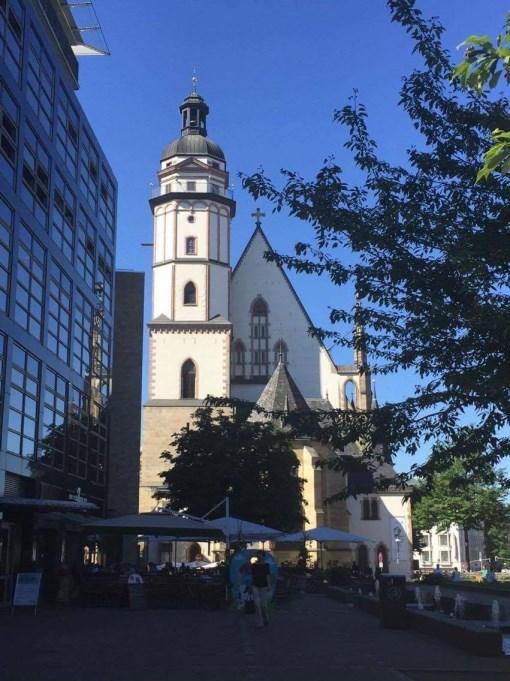
Im Winter lohnt es sich, die Weihnachtsmärkte zu besuchen, die im Jahr 1458 begannen und von 22. November bis 23. Dezember dieses Jahr geöffnet sein werden. Kaufen Sie sich einen Glühwein und Lebkuchen oder Geschenke für Ihre Freunde und Familie. Hören Sie die traditionelle deutsche Musik und essen Sie eine Bratwurst, hausgemachte Schokolade, Stollen oder geröstete Kastanien! Es wird ein Weihnachtsfest sein, das Sie nie vergessen werden!
Ein Aufenthalt in Leipzig ist nicht nur extrem preisgünstig und ein fantastisches Erlebnis. So ist Leipzig auch nicht weit von anderen schönen deutschen Städten entfernt. Beispielsweise eine Reise nach Dresden oder Berlin dauert mit dem Zug nur gut eine Stunde . Wenn Sie also einen Besuch oder nur einen Tagesausflug nach Leipzig planen, lohnt es sich auf jeden Fall!





DIE WÖRTER DES JAHRES 2016 By Mia O’Connell
Die Sprache verändert sich ständig und neue Wörter werden immer zum Teil der täglichen Gespräche. Die Presse spielt eine große Rolle bei der Änderung der Sprache und die ständig wachsende Beliebtheit der sozialen Medien haben erhebliche Auswirkungen auf die sprachlichen Tendenzen. Aber von welchen Buzzwörtern wurden öffentliche Diskurse in 2016 am meistens geprägt? Das Wort des Jahres ist in Wiesbaden von der Gesellschaft für die deutsche Sprache ausgewählt worden. Am Dezember wurde „Gutmensch“ als das Wort des Jahres 2016 von dem Richtergremium bestimmt, nachdem es seit 2011 auf der Liste war. “Gutmensch” beschreibt jemanden, der sich für die Political Correctness einsetzt. Neuerdings jedoch, wird es unter Bezugnahme auf Personen verwendet, die Migranten herzlich willkommen heißen und das ohne das Berücksichtigung von Nachteilen. Seit 1991 hat ein Gremium, das aus Sprachwissenschaftlern, Journalisten und Autoren besteht, in Darmstadt über das Unwort des Jahres entschieden. Das Gremium ist von Nina Janich angeführt, die Professorin für deutsche Linguistik an der Technische Universität Darmstadt ist. Das Wort wird normalerweise von den Medien benutzt und hat eine unerwünschte Konnotation. Von den 524 vorgeschlagenen Begriffe wird „Volksverräter“ herausgesucht, um das ehemalige Wort des Jahres „postfaktisch“ zu ersetzen.

Wie das Wort des Jahres, spiegelt „Volksverräter“ die Politik und öffentliche Debatte, die die Einwanderungspolitik diskutiert, wider. Jurysprecherin Nina Janich erklärt, dass diese Vokabel ein Erbe von Diktaturen sei, vor allem der Nationalsozialisten. Mit anderen Wörtern unter den Top Ten einschließlich „Brexit“, „Trump-effekt“ und „Gruselclown“, ist es offensichtlich inwiefern die Popkultur und aktuelle Ereignisse auf die Sprache wirken.
Die Wortwahl der kommenden Monaten wird fast ohne Zweifel von der Politik und den Hashtags stark beeinflusst.
Angesichts der wesentlichen politischen Veränderungen am Endes des Jahres 2016 wird das Wort und Unwort dieses Jahres ziemlich wahrscheinlich genauso umstritten sein, wie letztes Jahr.



9
THEUOBLINGUIST.CO.UK
LA VILLE DES LUMIÈRES



 By Katya Browne
By Katya Browne
En tant qu’ancienne étudiante Erasmus à Lyon, revenir un weekend en fin de semestre m’a permis de redécouvrir cette ville merveilleuse pendant un très grand évènement pour les lyonnais, la Fête des Lumières. Ce festival a lieu chaque année autour du 8 décembre, date significative pour cette fête (excepté 2015, où elle a été annulée suite aux attentats terroristes à Paris, le 13 novembre). Le 8 décembre 1852, on préparait une cérémonie pour fêter l’inauguration d’une sculpture de la Vierge sur la colline de Fourvière (où se situe la grande Basilique), mais à cause d’un orage, les célébrations ont été annulées. Les lyonnais n’ont pas voulu abandonner la cérémonie malgré cet obstacle; après que le temps s’était amélioré, ils sont descendus dans la rue avec des bougies en criant « Vive Marie ! ». Cette tradition d’allumer des bougies le soir du 8 décembre continue jusqu’à aujourd’hui, et les illuminations qu’on connait maintenant se sont développés autour de cela.



La Fête des Lumières 2016 s’est présentée en version diminuée par rapport aux années précédentes; une sécurité intensifiée avec contrôles de sacs aux 65 points d’entrée autour de la presqu’île, la partie centrale de la ville, où sont situées plus de 70 illuminations. Malgré cette atmosphère de sécurité et les grandes foules, les illuminations ont créés un véritable sens de magie dans la ville. Pour moi, le spectacle le plus magnifique a été la projection sur la cathédrale de Saint-Jean, dans le quartier du Vieux Lyon. La projection a fait sembler que l’édifice s’écroulaient devant nos yeux, avec une musique subtilement étrange; ce genre de reprises des monuments les plus connus de la ville a été un des grands thèmes de cette fête, à découvrir à nouveau en décembre 2017.
Pour plus d’informations, vous pouvez chercher: www.fetedeslumieres.lyon.fr/
UNE VISITE MÉMORABLE À LA CAPITALE DE NOËL
A la fin du mois de novembre, je suis allée à Strasbourg pour voir le célèbre marché de Noël et aussi pour découvrir l’Alsace.

Avant ce weekend-là, la seule chose que je savais à propos de la région était sa location : elle se trouve à la frontière entre la France et l’Allemagne. L’influence de l’Allemagne est visible dans toute la région.

La nourriture est allemande, avec beaucoup de saucissons, et des bretzels vendus partout. Je n’ai jamaisentendu autant de gens parler allemand en France, c’était très étrange !
 By Sarah Daniels
By Sarah Daniels
Le marché était magnifique et j’étais très pressée de célébrer Noël en avance avec mes amis. C’était même plus grand que le marché de Noël à Birmingham qui a lieu chaque année. La ville était pleine de touristes qui sont venus de l’étranger, ce qui était très positif pour moi. Il y avait une atmosphère de fête et d’amusement. Cette atmosphère était enjolivée par des décorations magnifiques! Dans toutes les rues, des différents motifs, des lumières jolies illuminaient les gens qui se trouvaient en dessous. Le plus impressionnant était l’énorme sapin de Noël sur la Place Kléber qui était décoré avec des boules de Noël plus grosses que des têtes.
La ville elle-même est bien sûr belle toute l’année. J’ai adoré la grande cathédrale gothique qui domine le paysage urbain. La Cathédrale Notre-Dame est là depuis le quatrième siècle et elle reste un centre important pour les Strasbourgeois aujourd’hui.
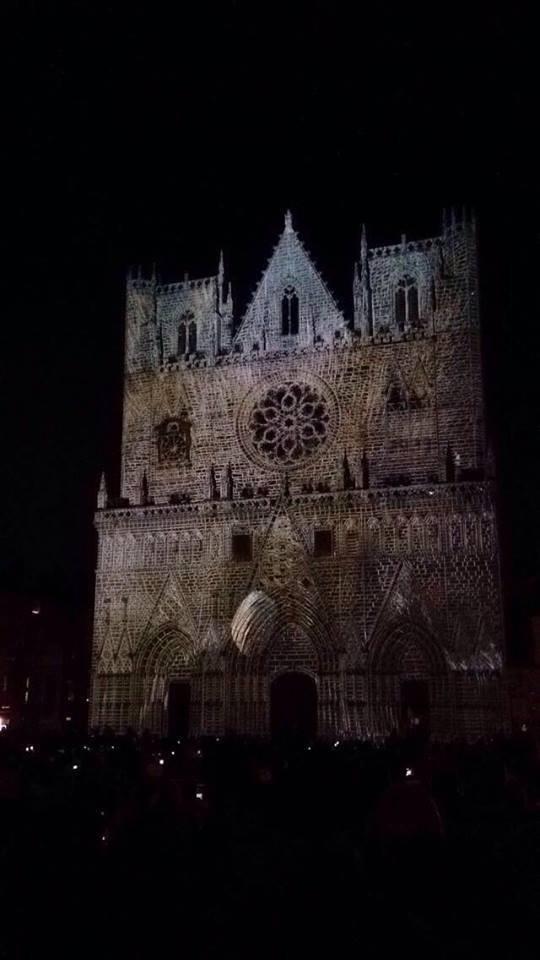
La vielle ville de Strasbourg est aussi particulièrement charmante avec des petits chemins pour les piétons et les maisons colorées avec des nuances d’un arc de ciel. On a aussi eu le temps de se rendre à Colmar, une ville qui était beaucoup plus belle à mon avis.
Tout compte fait, j’ai passé un weekend excellent en Alsace. C’est une belle région avec pleines de choses intéressantes, et j’espère revenir aussitôt que possible !










GUILD OF STUDENTS ‘OUTSTANDING OUTREACH 2015’! 10
...les illuminations ont créé un véritable sens de magie dans la ville
ESCAPAR Y EVADIR: MI AVENTURA EN HACIENDO DEDO

Hacer dedo en inglés es “hitchike”. Es una palabra que conlleva muchas connotaciones negativas, por lo que cuando mi amigo me convenció a hacerlo, ¡no sorprende que yo estuviera escéptica! Nunca imaginé la aventura que me esperaba.




Para los que no lo conozcan, “Escape and Evade” es un evento anual organizado por Carnival Rag, una de las sociedades universitarias más grandes cuyas actividades se centran en recaudar dinero para varias organizaciones benéficas. Año tras año equipos salen de Birmingham con la orden: “tenéis 60 horas, iros lo más lejos posible de Birmingham”, todo a fin de contribuir con las organizaciones benéficas. Parece fácil, ¿no? El truco es que no se puede gastar ni un céntimo en transporte.
Este año, los ganadores lograron llegar a Rumania, mientras nosotros terminamos en París. ¡Anteriormente equipos de otras universidades llegaron a Australiaeinclusoa Las Vegas! Nuestro objetivo era salir del país desde Dover, y después ir donde fuera posible. Subimos en trenes (logramos evitar o persuadir a los inspectores de billetes), cruzamos en ferry, y pedimos a vehículos que nos lleven de un sitio a otro. Me sorprendió que la gente fuera tan
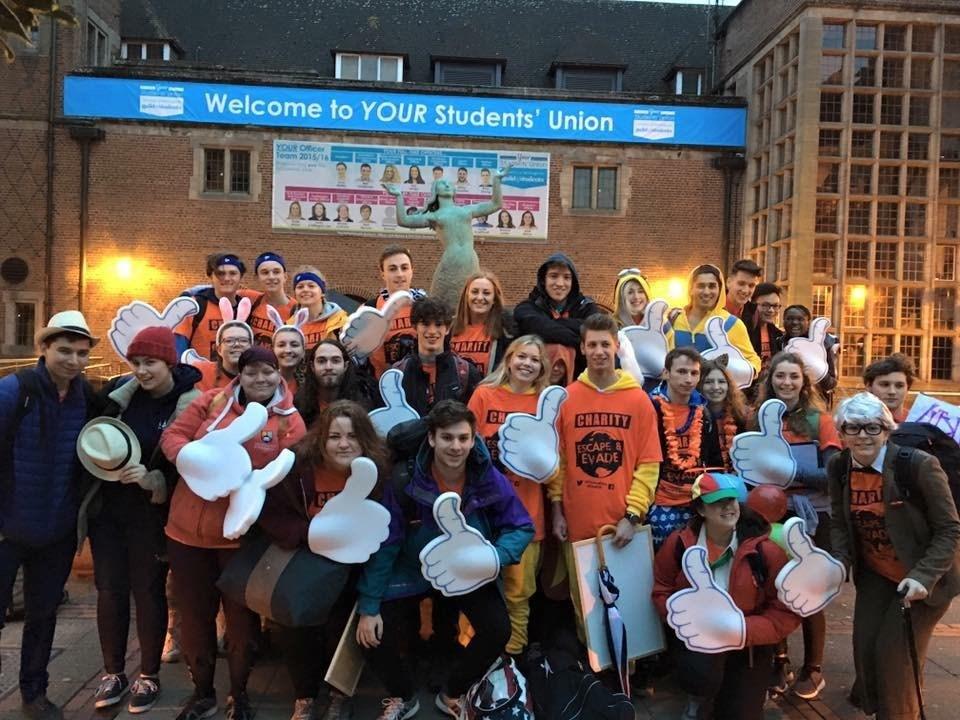 By Abi Whitehouse
By Abi Whitehouse
generosa, y cuando explicábamos que nuestro viaje era por una buena causa, la gente deseaba hacer todo lo posible para ayudarnos.
¡Lo recomendaría a todos! Es una experiencia única. Conocimos a gente tan distinta, en lugares fuera de los habituales, y como estudiantes de idiomas esto nos dio la oportunidad de practicar en un ambiente extraño. ¡Sin nada más, te sentirás satisfecho por haber apoyado a una organización benéfica! Si te interesa saber más, tendrá lugar una reunión informativa durante este semestre.


Para más información sobre Escape and Evade, u otros eventos organizados por Carnival Rag, visita su página en Facebook.





LA LLAR SECRETA DEL MODERNISME CATALÀ: A L’ÀFRICA
Passejant pel Passeig de Gràcia o admirant la majestuosa bellesa de la Sagrada Família, no hi ha cap dubte que l’epicentre del món del modernisme català es troba a Barcelona. El nom d’Antoni Gaudí és sinònim de la capital catalana, i les seves obres l’han transformat en la ciutat que avui dia coneixem com a Barcelona.

Però en un altre racó del mon – un lloc on ningú s’ho esperaria - l’esperitdelmodernismeencara segueix molt viu. Melilla és un de dues ciutats autònomes espanyoles que es troben al nord d’Àfrica, limitant amb el Marroc. El centre modernista de la ciutat es concentra al Triangle d’Or, on s’hi troba més de 100 edificis modernistes. Aquesta dada ha fet Melilla la segona ciutat de
By Stewart Tunstall
l’Estat Espanyol amb més edificis modernistes.
L’aparició del modernisme a Melilla va tenir lloc a l’any 1909 amb l’arribada de l’Enric Nieto i Nieto, un arquitecte barceloní qui va ser estudiant barceloní qui va ser estudiant del gran arquitecte català, en Lluís Domènech i Montaner. Nieto també va col·laborar en algunes de les obres més famoses de Gaudí. Fins a la seva mort l’any 1954, es va dedicar al desenvolupament arquitectural de la ciutat. Entre els seus projectes més conegudes son la Casa Tortosa (1914) i l’edifici La Reconquista (1915). També va dissenyar la Mesquita Central, un edifici de colors brillants situat al fons del barri musulmà.
Encara que cal fer una mica d’esforç per anar a visitar aquesta llar inversemblant de patrimoni modernista, val molt la pena fer-ho. A més de ser una ciutat plena de meravelles modernistes, també s’hi troba Melilla La Vieja, una ciutadella històrica queexplica la història militar d’Espanya amb vistes precioses de la ciutat, el mar i el paisatge marroquí que envolta Melilla.
THEUOBLINGUIST.CO.UK 11
QUEDA DO AVIÃO DA CHAPECOENSE

Em novembro do ano passado, o mundo esportivo ficou profundamente chocado. Os jogadores e treinadores da Chapecoense, um time de futebol brasileiro relativamente novo, que foi promovido rapidamente pelas divisões e jogava na Copa Sul-Americana pela primeira vez, morreram quando o avião que os estava levando à partida final da Copa caiu perto da cidade colombiana de seu rival, o Atlético Nacional. Pouco antes de embarcar no avião, o técnico da Chapecoense, Caio Júnior, publicou um vídeo nas redes sociais, explicando que a final da Copa seria o maior dia da história do clube. Em vez disso, se tornou um dia significativo por razões diferentes. Apenas seis das 77 pessoas a bordo do avião sobreviveram ao acidente, das quais três eram jogadores. Os outros jogadores, e todos os treinadores, morreram.


Os jogadores e torcedores da Chapecoense, que joga na cidade de Chapecó, no estado de Santa Catarina, estavam antecipando o fim perfeito de um ano de grande sucesso para seu clube relativamente pequeno, quando seu sonho chegou a um fim de cortar o coração.
By Connor Haines
O clube e seu adversário na final da Copa, o Atlético Nacional, realizaram um serviço comemorativo em seus estádios, que foram assistidos por milhares de torcedores de ambos os times, e membros das famílias dos mortos. O Atlético também pediu que a taça fosse concedida à Chapecoense como um gesto de respeito, uma decisão que lhes deu um prêmio especial graças a um espírito esportivo excepcional. O prêmio que a Chape recebe por ter vencido a Copa SulAmericana será a chance de participar da Copa Libertadores, a principal competição de futebol entre clubes profissionais da América do Sul.
Três meses depois, o clube e seus torcedores querem responder ao desastre com uma atitude positiva. Os eventos do ano passado foram descritos como “um conto de fadas com um fim trágico” – mas podem restaurar o clube em memória dos que morreram?






Depois da queda, a Chape recebeu uma grande manifestação de amor do mundo e dos outros times brasileiros. Os efeitos do que foi um evento incrivelmente triste foram reduzidos pela resposta tocante de times, jogadores e fãs. Nas redes sociais, milhares de pessoas utilizaram o hashtag #ForçaChape para mostrar seu respeito. Na Liga dos Campeões da Europa e nas ligas domésticas europeias, todos os times louvaram as pessoas que morreram na queda antes de suas partidas com um minuto de silêncio. Na Argentina e no Brasil, os clubes ofereceram emprestar alguns jogadores à Chapecoense. Também pediram permissão aos chefes do Brasileirão para que a Chape não fosse rebaixada durante as próximas três temporadas – uma oferta que o clube rejeitou, porque queria participar na divisão da maneira mais normal possível.

Não havia poucos jogadores que queriam ter um papel ativo no futuro do clube; até o atacante famoso brasileiro, Ronaldinho, e o ex-internacional argentino, Juan Ramon Riquelme, se ofereceram para jogar no clube. Agora, a Chapecoense tem um time completo e um técnico novo.
Seu time júnior progride na Copa São Paulo de Futebol Júnior, e o time principal faz suas preparações para a temporada do ano que vem, que começa em maio.
A maioria dos jogadores e funcionários do clube morreu, mas o espírito do clube ainda está muito vivo. A paixão dos fãs tem sido alimentada pela tragédia do ano passado, e o apoio e amor de todo o mundo permitiu que o clube pudesse continuar no futuro, com a memória da tragédia como inspiração para lutar.
GUILD OF STUDENTS ‘OUTSTANDING OUTREACH 2015’! 12
...seu sonho chego a um fin de cortar o coração
CAPODANNO ITALIANO

 By Roberta Grella
By Roberta Grella
In Italia ci sono diverse tradizioni per l’ultima notte dell’anno e la prima a cui tutti pensano è quella della biancheria intima di colore rosso. Infatti, nel bel paese si crede che indossare mutande rosse la notte di capodanno possa portare fortuna alla persona che le indossa. Questa tradizione risale all’impero romano in cui donne e uomini celebrando il passaggio da un anno all’altro, si vestivano di rosso poiché questo colore rappresentava potere, salute e fertilità. Questa usanza è rimasta nella tradizione italiana fino ad oggi ed è ancora molto sentita, tanto che quasi tutti posseggono un completo intimo di colore rosso da indossare esclusivamente per l’ultimo dell’anno.
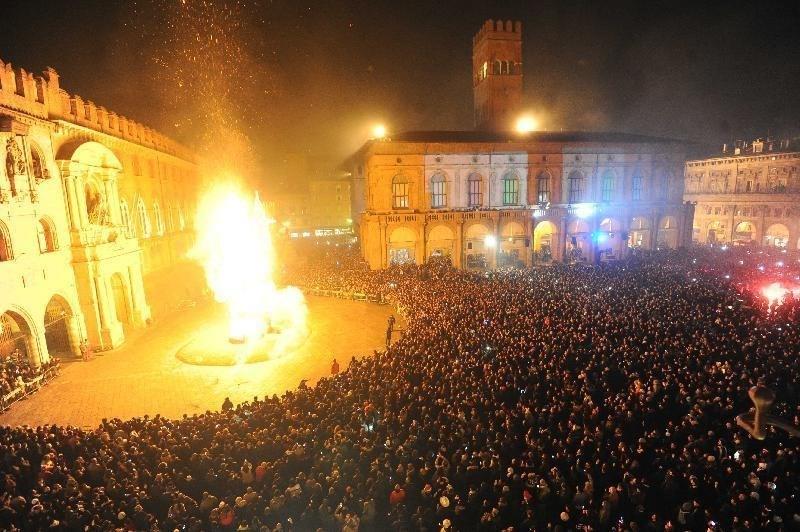
Un’altra tradizione è quella di mangiare cotechino e zampone accompagnati dalle lenticchie come contorno. Le lenticchie in particolare, sin dall’era romana, vengono considerate fonte di prosperità per via della loro forma tonda e della loro crescita durante la cottura che ricorderebbe le monete d’oro. Spesso, infatti, è usanza regalare un sacchetto contenente lenticchie ai membri della propria famiglia oagli amici più cari e questo gesto deriva dall’antica Roma in cui veniva regalata una scarsella, ovvero un borsello di cuoio, pieno di lenticchie.
Un’altra tradizione che, invece, è simile ad altri paesi è quella di aspettare la mezzanotte svegli insieme alla famiglia o agli amici e allo scoccare della mezzanotte, stappare una buona bottiglia di spumante e bere un calice tutti insieme. In Italia si crede molto nel potere
rigenerativo del nuovo anno, quasi come se lo scoccare della mezzanotte possa cancellare tutto ciò che è successo di brutto l’anno precedente, e forse proprio per questo si sente la necessità di perpetuare queste tradizioni considerate di buon auspicio. Ad esempio nell’Italia settentrionale c’è l’usanza di bruciare un fantoccio dalle sembianze di un vecchio o una vecchia che rappresenta l’anno passato, nella speranza di un anno migliore.; a Bologna questa tradizione continua ad essere attuata in Piazza Maggiore la notte del 31 gennaio. Decisamente diverse sono, invece le usanze nel sud Italia; la mia famiglia è originaria di Grottaminarda, un paesino di collina in provincia di Avellino, precisamente Campania, e per saperne di più sulle tradizioni meridionali, ho chiesto a mia zia Carmela di raccontarmele. A quanto pare l’ultima notte dell’anno c’è l’abitudine di prendere tutto quello che è vecchio o che non si usa più per poi buttarlo dalla finestra, come rito propiziatorio. L’ultimo e forse quello più conosciuto nel mondo è il bacio a mezzanotte sotto il vischio, un gesto d’amore che può solo significare ulteriore affetto e felicità nel nuovo anno. Tutte queste usanze vengono mandate avanti di generazione in generazione, mantenendo viva la tradizione popolare anche nel secolo della globalizzazione che porta all’uniformità. Ci sono tante tradizioni in Italia, soprattutto per la presenza di venti diverse regioni, ma ognuna di queste è accomunata dalla voglia di lasciarsi il passato alle spalle e aprirsi al futuro che ci aspetta.






THEUOBLINGUIST.CO.UK 13
In Italia si crede molto nel potere rigenerativo del nuovo anno
BO E NARODZENIE W POLSCE

Boże Narodzenie w Polsce – najważniejsze i najuroczyściej obchodzone, obok Wielkanocy, święto religijne w Polsce. Jego tradycje ukształtowały się na przestrzeni wieków, gdy zwyczaje pochodzące z czasów pogańskich poprzeplatały się ze zwyczajami wprowadzonymi przez Kościół. Na ich kształt miały także wpływ inne obrządki kościelne oraz tradycje ludowe. Obecnie Boże Narodzenie ma charakter święta rodzinnego i najczęściej jest obchodzone w gronie najbliższych.
Tradycyjnie dniem poprzedzający Boże Narodzenie i kończącym okres adwentu jest Wigilia Bożego Narodzenia. Dawniej stanowiła ona przygotowanie do świąt, ale po reformie kalendarza stała się ich częścią. W tym dniu sprzątano domy oraz dekorowano je snopami zboża, które ustawiano w kątach pokoi. Miały symbolizować pomyślność i dostatek. Ponadto domy ozdabiano iglastymi gałązkami zwanymi podłaźniczkami, które umieszczano w różnych miejscach. Zwyczaj ubierania choinki pojawił się w Polsce dopiero w XVIII wieku i przywędrował z Niemiec.
W liturgii kościelnej, zgodnie z postanowieniami II Soboru
 By Franciszka Kaczmarek
By Franciszka Kaczmarek
Watykańskiego, Boże Narodzenie rozpoczynają odprawiane w wigilię nieszpory. W Polsce ten czas liczy się od zapadnięcia zmroku i pojawienia się na niebie „pierwszej gwiazdki”. Jest to symboliczne nawiązanie do Gwiazdy Betlejemskiej zwiastującej narodziny Jezusa, którą według Biblii ujrzeli na niebie Trzej Królowie. Wieczerzę, jak każe obyczaj postną, rozpoczyna się modlitwą i czytaniem fragmentu Ewangelii Mateusza lub Ewangelii Łukasza w części dotyczącej narodzin Jezusa. Potem uczestnicy wieczerzy wzajemnie przełamują się opłatkiem, jednocześnie składając sobie życzenia. Na stole przykrytym białym obrusem z wiązką sianka pod spodem, ustawia się o jedno nakrycie więcej niż wynosi liczba zgromadzonych osób. Dodatkowe miejsce przy stole wigilijnym przeznaczone jest dla niezapowiedzianego gościa lub nieobecnej, bliskiej osoby. W tym dniu bowiem nikt nie powinien być sam. Wigilijny wieczór kończy uroczysta msza odprawiana o północy w kościołach. Według tradycji jest ona upamiętnieniem przybycia do Betlejem pasterzy, którzy jako pierwsi oddali hołd nowonarodzonemu Chrystusowi. Zwyczaj odprawiania nocnej liturgii wprowadzono w Kościele w V wieku i do Polski dotarł wraz z chrześcijaństwem.
Уейн Руни прави история!
Здравейте мили читатели. Hадявамсе, че сте прекарали чудесно колeдните празници и, че сте харесали предишната ми публикация в товa cпиcaниe. To бeшe oтдaдeнo набългарскиятфутбол. Toвa изданиеще бъдe посветeнo на един наистина забележителен футболиcт, модел за подражание за много младежи, и един от найдобритенападателизавсичкивремена:УейнРуни! В събота 21 януари, срещу Стоук Сити, Уейн Руни отбеляза 250-тият си гол във всички състезания за Манчестър Юнайтед! По този начин, Руни счупи 44 годишният рекорд на Cър Боби Чарлтън и тaкa Капитанът Руни станa нaй-дoбрият голмайстор в историята на клуба. Руни определено има легендарен статус. Качеството на рекордo-подобрявaщият гол демонстрира таланта който играчът винаги е имал. Фактът, че попъдението беше отбелязанo в продължениeтo, и Руни искашe да отбележи още един гол веднага след този, за да ce спечели мача, отразява
By Boris Genov
неговиятпечетлявaщманталитет.







След като пристигна в Манчестър Юнайтед от Евертън за сума в региона на £27 млн, бивш рекорд за трансфер на тийнейджър, Руни постоянно се e подобрявал. Той е също най-добрият голмайстор на Англия за всички времена, c 53 голa вмоментанаписaненатазистатия. Само на 31-годишна възраст, Руни има способността да достигне над 300 гола за Манчестър Юнайтед, и да се опита да надмине рекордa на Алън Шиърър от 260 гола въвВисшатаЛига.
БъдещетощепокажедокъденаследствотонаРунинаи извън футболния терен ще достигне. За сега, Руни e печелил Шампионската Лига, Cветовната Купа за Клубове, 5 пъти Висшата Лига, ФА Купата, 2 пъти Английскata Купа на Лигата, и 4 пъти Комюнити Шиълд. Независимо дали той ще напусне Манчестър Юнайтед това лято, той винаги ще бъде помнен като единотнай-добритефутболистинавсичкивремена.




GUILD OF STUDENTS ‘OUTSTANDING OUTREACH 2015’! 14
A WINTERY WEEK IN ST PETERSBURG

Having spent a month studying in St. Petersburg last summer, I jumped at the chance to return to this beautiful city at the start of the Christmas break, on a trip alongside five other students from universities across the UK.
After experiencing its summer, I saw a whole different side to St. Petersburg on my (rather unexpected) return only a few months later to a city covered in snow and ice. The River Neva, on which we had sailed on our final evening in the summer, was now completely frozen over; the great expanse between the Winter Palace and the Peter and Paul Fortress was thick ice. All the snow covering the city’s already breath-taking architecture made for a spectacular surrounding, almost as if I had stepped into a fairy tale. I revisited a few of my favourite locations, going up St Isaac’s Cathedral and seeing the Fortress and, of course, the Winter Palace, all of which were even more stunning, lit up at dusk and covered in white.
I have never known it to take a group of people so long to leave a building! We knew we had to layer up as much as we could and so wrapped ourselves in thermals and were, just about, warm. It was bitterly cold, even wearing said thermals – the cold caught in your throat when you breathed in. This was a stark comparison to entering the metro, where the warm air hit you and you were suddenly desperate to strip off as many outer layers as possible; we looked red and sweaty while the residents stood happily in their thick (fur) coats and hats. Compared to the lingering light and warmth of the ‘White Nights’ I experienced in July, this week was the opposite end of the spectrum; sunrise was at about 9:30am and it started getting dark at about 3pm. However, given the cold, it was tiring being outside for longer than a couple of hours anyhow. The cold weather also meant we ate a lot of pie: potato or “meat”. I have taken to calling it “meat meat”, due to not quite being sure of its contents! We also ate a lot of my favourite dish pelmeni. In comparison to our diet during
By Imy Burgoyne










the summer, there was thankfully very little dill in sight! One of the aims of our trip was to meet with and get to know Russian students. Not only was this a great opportunity to use my conversational Russian, it also enabled us to find out more about the life of Russian students. When we asked one girl how far away her home town was, she replied “not far”, meaning in fact a 3-day train journey. In comparison with those living in the far east, whose journey is seven days long, I guess this is relatively short! We went along to a weekly English movie night, where students test out their English language skills. What was incredibly touching was that one girl said she came that week for the first time because she heard a group of Brits were coming along and wanted to meet us. The eagerness of the students to chat with us and show us their beautiful city was truly amazing.
This trip has been a massive encouragement for me in terms of my language skills. Being able to communicate with the students who, for the most part, had very little knowledge of English, being able to help the non-Russian speakers in our group to move about the city and seeing my friends act as translators for entire conversations or talks has given me a real sense of purpose to learning the Russian language.
15
The eagerness of the students to chat with us and show us their beautiful city was truly amazing
THEUOBLINGUIST.CO.UK




























































































 Steffi Ballmann
Steffi Ballmann



 Author: Sun-Mi Hwang
Author: Sun-Mi Hwang
 By Bea Harvie
By Bea Harvie












 By Tom Shacklock
By Tom Shacklock


















 By Katya Browne
By Katya Browne



 By Sarah Daniels
By Sarah Daniels




 By Abi Whitehouse
By Abi Whitehouse












 By Roberta Grella
By Roberta Grella






 By Franciszka Kaczmarek
By Franciszka Kaczmarek













